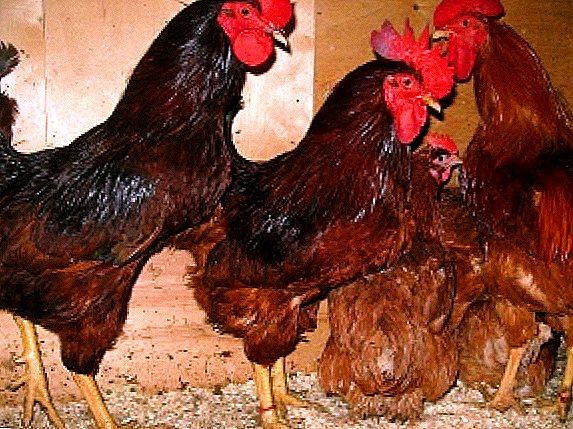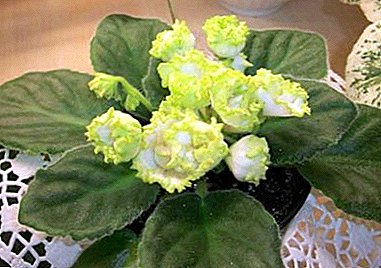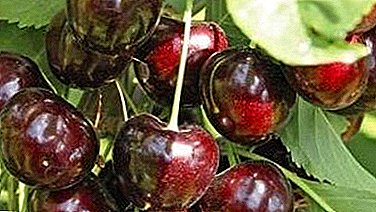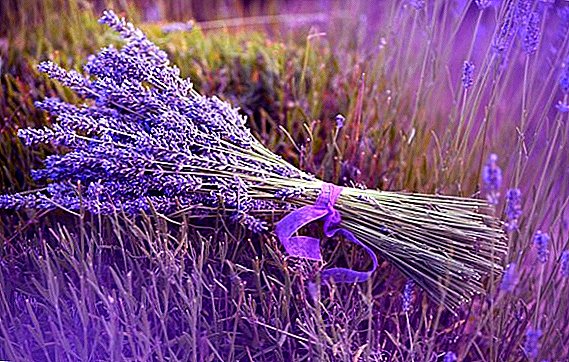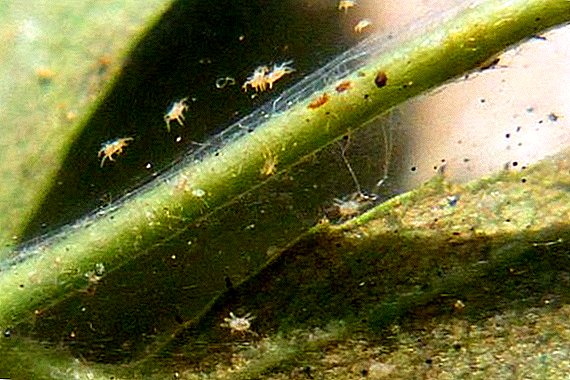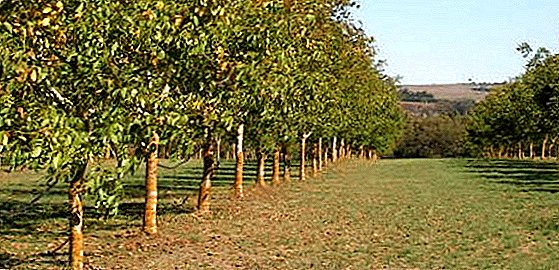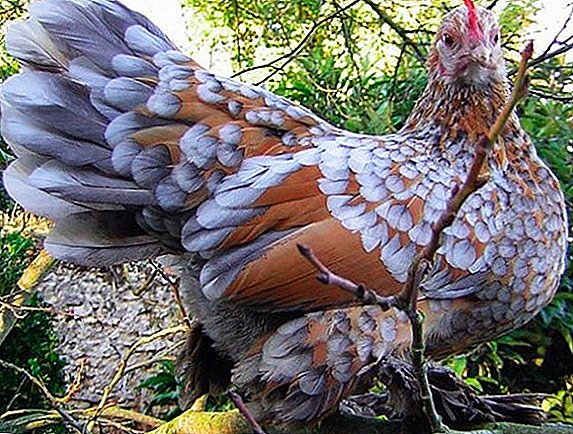 Particular importance of breeding ornamental chickens attached in ancient China and Japan. Such birds were considered the favorite of gods, worthy of worship. Now they are grown to participate in exhibitions and just for aesthetic pleasure. The cost of chickens and adult birds of rare breeds is very high, so their breeding is a very profitable business. Milfleur - one of the most beautiful breeds, bred in Belgium in the XIX century, as well as one of the most farmed today.
Particular importance of breeding ornamental chickens attached in ancient China and Japan. Such birds were considered the favorite of gods, worthy of worship. Now they are grown to participate in exhibitions and just for aesthetic pleasure. The cost of chickens and adult birds of rare breeds is very high, so their breeding is a very profitable business. Milfleur - one of the most beautiful breeds, bred in Belgium in the XIX century, as well as one of the most farmed today.
Inference history
Milfleur breed is one of the varieties of the Belgian Ukkel Bentamki. The creator of the breed is Michel Van Gelder, who lived at the end of the 19th century in one of the Brussels municipalities - Ukkele. Milfleur, Porcelain and White became the first varieties of the Ukkelian Bentamka.
But milfleur was the first to be introduced into the Perfection Standards of the American Bird Association in 1914. Supposedly, Van Gelder used the Dutch Saber Bentamka and the Antwerp Bearded Bentamka to breed.
Since Michel traveled a lot and brought various types of chickens from his wanderings, some specialists in milfleers trace the influence of the Japanese Bantamok. The purpose of the selection was the breeding of a decorative dwarf breed with spectacular plumage. 
Description and characteristics
The name "Milfleur" is translated as "a thousand flowers" (de Mille Fleures). In the US, the breed is called - Belgian bearded Ukkel. Both names reflect the main breed characteristics of chickens - bright brown feathers ending in a silver crescent with black edging and the presence of tanks.
Breed differ:
- high decorative qualities;
- frost resistance;
- gentle, docile nature;
- demanding quality food.
Exterior
The basic color of milfleur is represented by hens with chocolate colored plumage. Representatives of this color are standardized in 1914.  Breed sign of these beauties - paws, intensively feathered along the entire length. A less common variety is blue milfleur with dark gray plumage.
Breed sign of these beauties - paws, intensively feathered along the entire length. A less common variety is blue milfleur with dark gray plumage.
Read the description and breeding features of such ornamental breeds of chickens as “Russian Black Bearded”, “Shabo”, “Paduan”, “Betnamka”, “Brama”, “Gudan”, “Minorca”, “Araucana”, “Cochinhin”, "Phoenix", "Pavlovsk gold and silver."
Today there are about 20 varieties of color milflёrov. There is no common standard for birds in the world. Most countries apply their own definition of exterior features.
Thus, the standard of German breeders (Bund Deutscher Rasse Geflügel Zucht) adopted the division of the ostrich-laying chickens into 4 groups:
- the first - birds of porcelain shades, these include porcelain milfleur;
- the second - speckled, represented in the rock blue speckled, black and white;
- the third - birds of a motley color: it is blue striped with a golden or silvery neck;
- the fourth - monochrome birds: blue, white, yellow.

The main distinctive feature of downy-legged ones is the presence of leg plumage. Because the length of the feather at a high bird activity may break, then the plumage density is taken into account.
Other features:
- The body is rounded with a beautiful rounded back.
- The rich lush plumage on the neck goes down like a curtain on his back. This is especially noticeable in cockerels.
- The average size of the head.
- Eye color depends on color.
- The transition to the tail should be smooth. For all cockerels, except for white, the tail is decorated with black sickle-colored kositsyami with green tint.
- Full chest, protruding forward, both in males and in females.
- Comb straight, regular shape, notched. Color comb and earrings - red.

Character
An excellent balanced temperament makes these chickens suitable for keeping novices. Milfleur - very affectionate, so they can even be pets, and not just representatives of farm birds. Light and very mobile - they are always peaceful towards other inhabitants.
Males are gallant, always invite chickens to the stern and actively take care of their harem. Despite the friendliness, the males actively protect the coop from the encroachments of predators. One rooster can take care of brooding of 7-8 hens.
Important! To maintain the breed traits it is important that the cockerel be from a brood unrelated to the hens. For pullets usually give birth to a rooster a year older than his ladies.

Hatching instinct
Chickens are excellent mothers with a developed incubation instinct. The hen almost never leaves the clutch even for drinking and eating. The dimensions of the decorative hens allow them to incubate the clutch with no more than 10 eggs. Therefore, if you need more chickens - use an incubator to help the hen.
Then she will be great to drive both her and the hatchery chickens. Breeders use chicks of this breed to breed pheasants, quails and other rare birds. When the hen is sitting on eggs, it needs more nutritious food than usual, and obligatory access to clean water.
On laying chicken try to sit in the spring and summer. Such a little tree will not leave the nest for a long time and will try to incubate even one egg. A distinctive feature of the milfleur is the ability to sit on a nest up to 3 times per season. 
Performance Indicators
Milfleros are representatives of ornamental dwarf breeds, so despite a good weight gain, they still weigh no more than 800 g. The egg production of the hens does not exceed 110 eggs a year with a weight of 30 g. The maximum productivity falls in the second year of egg-laying.
Important! Productivity is affected by the problem of obesity. If you overfeed the hens, they will add weight, but will be less likely to be carried.
Live weight cock and chicken
The standard live weight of a rooster is 700–800 g, of a hen - 500–700 g. By five months with good nutrition, young animals gain 80% of live weight. Milfleura meat has good taste and is dietary, because contains little fat. 
Puberty, egg production and egg mass
The productivity of the hens per year is 100-110 eggs of white or cream color weighing about 30 g. The hens begin to lay eggs in 5-6 months. The testicles of the first year are small, but more delicious. In the second year of life, the eggs become larger and reach 35-37 g.
What to feed
In feeding milflerov use dry, wet and combined feed. Cereals must be in the form of corn, barley, wheat, millet. Wet food (mash) is prepared in broth or dairy products. The structure includes: crushed grain, meat and bone meal, oilcake, bran, fish meal. Separately, root vegetables, bran and greens are introduced into the diet.
We recommend to read about how to give meat and bone meal and bran chicken.
Chickens
Daily chickens are fed with boiled millet and finely chopped egg. In the trough pour chamomile decoction. In the first week of growth, greens (beet tops, plantain), boiled carrots, cottage cheese, and yogurt are added to the chicken ration. 
Chicken feeding schedule:
- 1 week - 8 times;
- 2 week - 7 times;
- 3-4 week - 5 times;
- 5-6 week - 4 times.
Read more about how to prepare feed for chickens and for adult birds with your own hands.
To provide youngsters with nutrition, energy and trace elements, the diet includes:
- 70% of grain feed;
- 30% - wet mash, including bran, yeast, meat and bone meal, vegetables, greens.

If you do not have enough time to prepare your own feed, you can use industrial feed feed:
- for chickens - "Start";
- for young animals - "fattening";
- for adult birds - "Finish".
Did you know? People did not always raise chickens to get eggs and meat. The selection properties of the Indian Brahmins were based on the fighting properties of wild Banya chickens. And the ancient Chinese specialized in enhancing decorative qualities, since the behavior of ornamental chickens was interpreted as mystical messages to people by nature or deities.
Adult chickens
It is necessary to feed the chickens 3 times a day: in the morning and in the evening with grain, and in the afternoon with mash. The daily rate of grain - 50-60 g per 1 chicken, including germinated grain. 
Food is distributed as follows:
- first feeding - 30%;
- second feeding - 30%;
- third feeding - 40%.
The composition of the grain sweep:
- corn - 40%;
- wheat - 25%;
- other grains - 35%.
Learn how to germinate wheat.
Germinated grain can replace up to 20% of the grain mixture. Ornamental breeds are very demanding on the content of B vitamins and proteins. A sufficient amount of animal protein is in the serum. In addition to proteins, whey is rich in vitamins of group B, ascorbic acid, trace elements - potassium, magnesium, phosphorus, iron.  Germinated grain is not only an active biostimulant, but also a means of promoting the development of beneficial intestinal microflora, as well as an excellent antioxidant that normalizes the work of the intestine and removes toxins from the body of the bird.
Germinated grain is not only an active biostimulant, but also a means of promoting the development of beneficial intestinal microflora, as well as an excellent antioxidant that normalizes the work of the intestine and removes toxins from the body of the bird.
Vitamins of group B enter the body of layers with bran, legumes, cottage cheese and fish meal. This group of vitamins is involved in the normalization of the digestive and reproductive systems.
The daily ration should also include:
- Calcium in the form of chalk, crushed shell, cottage cheese;
- vitamins and minerals - in the form of vegetables and chopped greens;
- fine fraction gravel - to improve food digestion.

Content Features
Unlike other relatives of Bantamock, milflera are adapted to the cold climate and feel good in northern latitudes.
Among the features of the maintenance of poultry farmers note:
- the need for quality nutrition;
- the possibility of maintaining a small area;
- the need for periodic processing of birds and poultry houses from parasites.
Important! For the treatment of birds from lice, fleas and other parasites used aerosol means. Handling chicken, you can not send the spray on the head of a bird. And when processing a chicken coop, it is necessary to move the birds from it for at least 8-10 hours.
Requirements for the house
For a herd of 10 chickens and a rooster there is enough area of 1 sq. M. The optimal size - chicken coop 1.5 x 2 m.  The temperature in the chicken coop should be within + 15-24 ° C. The increased temperature of the air in the house in summer contributes to the intensive removal of water from the body, because of this the birds are less frequent than usual.
The temperature in the chicken coop should be within + 15-24 ° C. The increased temperature of the air in the house in summer contributes to the intensive removal of water from the body, because of this the birds are less frequent than usual.
We advise you to read about how to choose the right chicken coop when buying, how to make a chicken coop from a greenhouse, how to build a chicken coop for the winter, how to equip it, how best to heat the chicken coop in winter, and also how to make ventilation and lighting in the chicken coop.
The temperature below +15 ° C in the chicken coop in winter causes the birds to spend the energy received from the feed to maintain body temperature. In this case, the chickens also rush much less, because egg-laying requires up to 40% of the energy received from the feed.
Poultry house equipment:
- Roosting Since the milfleros love and know how to fly, they make roosts for them in several tiers (steps), so that each bird can choose for itself the optimum height. The persecution system is completed with a ladder.

- Floor. Luxurious plumage on the legs requires a clean floor. To do this, the floor covering of the house is made in the form of a floor heating system, where insulation is laid on the subfloor, and then a finishing floor is installed.
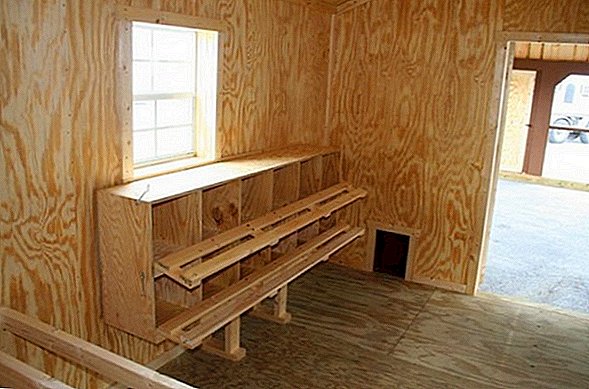
- Purity. The presence of sawdust, straw, dry leaves is allowed on the floor. This litter should not be wet or dirty.
- Heating, ventilation. The house is insulated, the ventilation system and artificial lighting are installed. For lighting, fluorescent lamps are used. Ventilation can be supply and exhaust and be equipped with a fan. Heating can be done in the form of an infrared heater, convector or other heating system.
- Household items. In the house set watering and feeders. The breed has increased hygiene requirements - drinkers and feeders should be clean and regularly disinfected. For wet and dry feed, different feeders are needed.
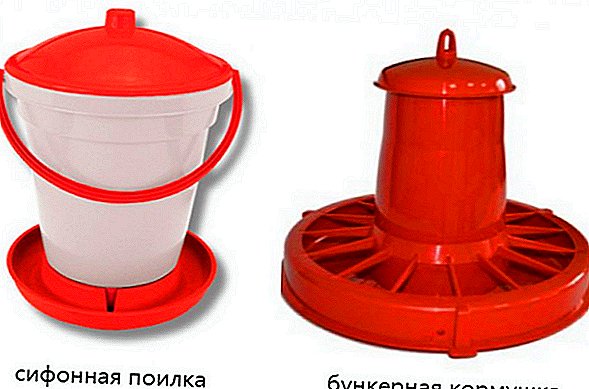
You will probably be interested in reading about how to make a roost, a cage, an aviary, a nest, an automatic feeder and a drinker for poultry.
- Ash bath. To fight with lice and other parasites, a ash bath is set in the hen house, but in addition to this, the ashes are also poured onto the litter - this is useful for paws.
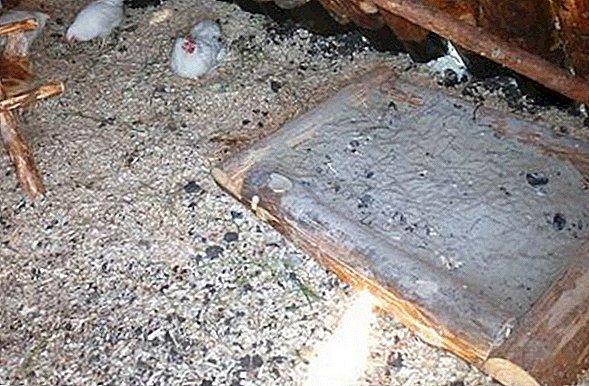
Walking yard
For 10 chickens, a walking yard with a size of 2-4 square meters is enough. The yard is necessarily covered with a net to keep the chickens from scattering. It will be better if the walking will be portable. In order for the chickens to be comfortable walking, the ground should be placed on the grass, sandstone or on small gravel. Other types of soil may stain foot plumage.
How to endure winter cold
Of all the dwarf breeds, milfleur tolerates the cold better than others and refers to frost-resistant rocks. But they should not walk in the snow - the thick plumage of the legs can get wet and freeze. Birds walk well at a temperature of about 0 degrees with no dirt, puddles, snow.
In order to maintain egg production in the winter, they need a warm chicken coop. The walls of the house are insulated with mineral wool, eco-wool or other insulation. The material must be resistant to rodents and pests, have high thermal insulation properties and poorly absorb moisture.  If the temperature in the chicken coop drops below +17 ° C, then the chickens may stop rolling.
If the temperature in the chicken coop drops below +17 ° C, then the chickens may stop rolling.
Did you know? By the number of symbols of worship, chickens are absolute champions among birds. Images of representatives of different chicken breeds were minted on coins of 16 countries of the world.
Advantages and disadvantages
The virtues of milfleur:
- high decorative qualities;
- variety of colors;
- frost resistance and adaptability to life in the northern countries;
- simplicity of content;
- can fit in a small coop;
- developed maternal instinct;
- sustained immunity.

Did you know? It is believed that there are more than 700 breeds of chickens in the world, but only 180 of them are described by the standards of the poultry industry. One of the most popular classifications separates rocks by geography.Breed deficiencies:
- decorative milflorki will not bring you income in the form of meat or a large number of eggs;
- the presence of feathered paws requires increased attention to the floor of the chicken coop and the walking area;
- Chickens need good nutrition.

Reviews from the network








